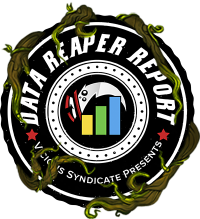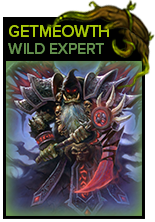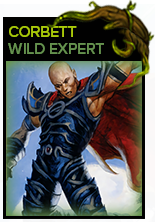
Welcome to the 29th edition of the Wild Data Reaper Report!
The data presented in this article was collected after the ban of The Demon Seed.
Contributing to the Data Reaper project through Hearthstone Deck Tracker or Firestone allows us to perform our analyses and to issue the weekly reports, so we want to wholeheartedly thank our contributors. Without the community’s contributions, there would be no project. Contributing data is very easy, so if you enjoy our content and would like to make sure it remains consistent and free – Sign up!
Quick Links
Class/Archetype Distribution | Matchup Winrates | vS Power Rankings | Meta Score | Class Analysis & Decklists | How to Contribute | Credits
Number of Games
| Overall | 120,000 |
| Legend | 20,000 |
| Diamond 4 to 1 | 17,000 |
| Diamond 10 to 5 | 19,000 |
| Platinum | 17,000 |
| Bronze/Silver/Gold | 47,000 |
Class/Archetype Distribution
[TABS_PRO id=52145]
Even following The Demon Seed ban, the Wild format is still feeling the impact of Questlines from United in Stormwind. The two most popular decks, by a significant margin, are Questline Pirate Warrior and Odd Questline Hunter. The popularity of these decks can be partially attributed to the desire to play new cards, but as we’ll see later, the power level of these decks plays a bigger factor.
Warlock may have gone through a series of nerfs and bans to Darkglare Warlock and Seedlock, but the class doesn’t seem to be suffering from it. Following the elimination of the questline, Warlock has settled primarily on Even Warlock archetypes, both pure and Reno variants. Reno Warlock, a favorite of many, has also made a return, after it was nearly unplayable during the Seedlock meta.
Secret Mage, a pillar of the format over the last few years, has drastically shrunk in popularity during Stormwind. Ignite Mage is rivaling its popularity and taking over the class at legend.
Priest has become a more diverse class thanks to the arrival of a new archetype in Aggro Shadow Priest, one that is very different from the two mainstays of Wild in Reno and Big Priest. While not as prevalent following the Demon Seed ban, Shadow Priest remains noticeable.
Celestial Druid is the main representative of its class. There has been some experimentation with Aggro Druid as well as Questline Druid, but neither have gotten too much traction.
Shaman had its two minutes of fame prior to United in Stormwind, but now we’re back to normal with Shaman being a relatively unpopular class with no real identity. Paladin has yet to recover from all the nerfs it received during Forged in the Barrens. Rogue might be the messiest class in the format, with an assortment of janky decks led by Pillager Rogue. Demon Hunter is almost completely absent, and essentially irrelevant in Wild.
[TABS_PRO id=52146]

[TABS_PRO id=52147]
vS Meta Score
[TABS_PRO id=52148]
The Wild meta is extremely top-heavy, there’s no other way to describe it.
While the top four of our Power Rankings may have been predictable, we don’t think anyone expected how above and beyond they were of everything else. Put quite simply, there are four decks you can play if you would like to have the best chances of winning. Questline Pirate Warrior, Even Warlock, Even Reno Warlock, and Odd Questline Hunter. There is only one Tier 2 deck by our metrics: Shadow Priest, and just barely.
Questline Pirate Warrior is currently the best deck out of those four. The Questline provides a late game win-condition in addition to the strength of early pirates and Patches as well as a tutor for the best card in their deck that starts in their opening hand. The matchup spread reflects the current state of the meta very well. Only Warlock and Hunter, the other Tier 1 representatives, are well positioned to beat Questline Warrior. This group is first defined by Warrior’s dominance over the rest of the field.
Even Renolock and Even Warlock slightly differ in their gameplan. Even Renolock takes advantage of the highlander payoffs alongside a demon package. Even Warlock sacrifices those payoffs for consistency in early-to-mid-game threats. They share similar matchup spreads. Even Warlock performs better against Hunter and Warrior, but Even Renolock has a more well-rounded matchup spread against the rest of the field and holds a significant edge in the mirror.
Odd Questline Hunter is the last of the Tier 1 titans. Defend the Dwarven District has transformed the class from a Wild afterthought into a powerhouse. While Odd Questline Hunter can be countered more easily compared to Warrior and Warlock, both in specific matchups (Druid) as well as with a wide variety of tech cards, it is best positioned against the other Tier 1 decks. In a mini-metagame within those four, Hunter wins out.
There is really no point in mentioning the other decks in this discussion because they’re all just that much weaker than the Tier 1 group. The power gap between the strong decks and everything else is simply astounding. Of course, we will discuss them throughout the class sections, but the disadvantage of running them is important to keep in mind.
Class Analysis & Decklists
Demon Hunter | Druid | Hunter | Mage | Paladin | Priest | Rogue | Shaman | Warlock | Warrior
Upon Stormwind’s release, decks centered around The Demon Seed were repeatedly nerfed until the card was eventually banned outright from Wild. This followed the banning of Stealer of Souls, making it just the second ban in Wild’s history. While Stealer of Souls decks had particularly problematic play patterns, in the case of The Demon Seed both popularity and balance were even greater concerns.
That said, minor inconveniences like bans can’t slow down Warlock as it has remained one of the premier classes of Wild. Among four Tier 1 decks in the entire format, Warlock has two of them. Let’s start with the non-highlander version.
Even Warlock was given a total transformation in this expansion. More early game threats and more lethality have been key difference makers. Its popularity gradually increases when moving up the ladder. However, even at high ranks, Even Warlock isn’t overly popular.
The core of the deck is surrounded by a variety of tech options. Nerubian Unravaler is a commonly seen choice but looks surprisingly ineffective against Hunter and is dreadful against Questline Warrior and Warlock mirrors. It is indeed a powerful lockout against Ignite Mage and Celestial Druid, so it’s understandable why players have gravitated towards the card. Meanwhile, Darkbomb isn’t currently seeing a ton of play within the archetype, but it’s likely something that should be given greater attention.
Even Warlock is a very impressive deck, but it isn’t as well-rounded as Even-Reno Warlock. The highlander iteration looks almost strictly superior. There are a couple of notable downsides, a loss in percentages against both Odd-Questline Hunter and Questline Warrior. However, the benefits against the rest of the field are quite apparent.
Even-Reno Warlock flips unfavorable matchups against Priest into favorables. It’s also better against some aggressive decks. It wins the mirror decisively, and although it loses some ground against Celestial Druid, it remains quite favorable. Although the two variations of Even Warlock currently exhibit highly similar play rates and win rates, it would be expected that players drift towards the Reno version of the deck over time, given their respective matchup spreads.
Reno Warlock is the only other deck seeing significant play within the class, as players excitedly picked up the archetype after The Demon Seed ban. However, there’s little reason to play odd-costed cards in a Reno Warlock list, with the deck looking quite weak overall.
Cute Warlock and Disco Warlock remain fringe options and joining them in that category is Darkglare Warlock. Nerfs to Flesh Giant and Darkglare have slowed the deck to a glacial speed compared to how it was prior to the changes. Darkglare Warlock has repeatedly been written off before and has always managed to resurface, so we wouldn’t rule out the possibility of it returning, but based on its low sample, it does seem to have been greatly affected to the point it cannot match the currently popular archetypes in the class. It might be hovering around the 50%-win rate mark, or slightly under it.
Questline Warrior is the most dominant deck on ladder overall. It is the best performing archetype at all rank brackets and has a frequency that eclipses 20% of the field at upper diamond. Questline Warrior builds have trended towards becoming lower curved, with emphasis on incredibly fast quest completion. There is a quirk to Questline Warrior’s matchup spread, where it’s crushing everything except the other Tier 1 decks, Odd-Questline Hunter and the Even Warlock pair. This isn’t a coincidence: a deck’s success in Wild is largely determined by its ability to deal with Warrior.
Golakka Crawlers becoming a core inclusion in Even Warlock would likely result in that matchup becoming highly favorable for the Warlock. Unfortunately, it seems there is nothing the rest of the meta can realistically do to meaningfully curb Questline Warrior’s dominance.
Odd-Questline Warrior is a cute idea that ultimately achieves nothing. It has zero advantages whatsoever over normal Questline Warrior and finds itself near the very bottom of the power rankings. We’ve featured a list for anyone looking to give away free stars as we near the holiday season.
Odd-Questline Hunter is the best deck in the format against the other Tier 1 titans. However, compared to these other archetypes, its matchup spread is a bit more checkered overall. It has more clear counters and weaknesses, while lacking strong options when it comes to the final pieces of its deckbuilding. Fortunately for Hunter, Warrior and Warlock offer a layer of protection while acting as fodder for the Hunter themselves.
Celestial Druid is a deck with a 70-30 matchup against Odd-Questline Hunter. This might be a big problem for the deck, if it weren’t the fact that Celestial Druid loses hard to Warlocks. Similarly, Odd Paladin is quite favorable against Odd-Questline Hunter but must face a 25-75 domination whenever it meets a Questline Warrior. It’s very difficult for these counters to even approach viability when they are pushed back so aggressively by the other dominant forces of the meta.
In a way, Odd-Questline Hunter is an opposite to Questline Warrior. Odd-Questline Hunter welcomes a ruthless meta, one with increased popularity of the best decks in the format. Conversely, Questline Warrior will be at its best in a sea of diversity. While both archetypes are incredibly powerful right now, Questline Warrior is clearly out in front since the format isn’t particularly curated. We’ll have to see if that gap shrinks over time.
The final few slots of Odd-Questline Hunter have been experimented with endlessly. None of the draw options look strong. Coldlight Oracle looks good against Warlocks but is terrible in other matchups. The Master’s Call package is often far too clunky. The featured list uses a handful of tradeables for the final cards, but it’s certainly less than ideal.
Ignite Mage has undergone a dramatic transformation from a spell-centric Incanter’s Flow deck to one built around the tradeable mechanic and combo consistency. While it is leagues behind the titans of the format, it’s one of the better options outside that top echelon.
The matchup spread for Ignite Mage aligns with what we’ve come to expect from these types of decks: weak to aggression and good against decks that give it time. The new build is quite difficult to disrupt consistently due to the higher minion density, making Dirty Rat much less effective. The deck is quite consistent in popping off around turn 6, making it one of the faster OTK decks we’ve ever seen in the format. One copy of Ignite is all that is needed to deal just over 30+ damage within the turn timer and dropping the second copy improves combo consistency.
We feel a pulse. Despite being assumed dead, Secret Mage is showing some signs of life. It’s an embarrassing situation for the deck given its previous long-standing role as a meta tyrant, but Secret Mage manages to even sneak into Tier 3 at legend ranks, not an easy feat in the current climate!
The top tier decks still pose serious problems for Secret Mage. It has brutal matchups against Questline Warrior, Odd-Questline Hunter, and Even-Reno Warlock. However, its spread against the rest of the field is more than quite solid, as it continues to be a jank and combo killer.
Despite players largely abandoning the deck after the nerf to Mindrender Illucia, Shadow Priest remains quite competitive.
Shadow Priest is good against the non-highlander version of Even Warlock and various glass-cannon combo decks. Where it struggles is against the triumvirate of Even-Reno Warlock, Odd-Questline Hunter, and Questline Warrior. This makes it difficult to see Shadow Priest having much long-term promise in the meta.
Players have largely reverted to builds using Shadowcloth Needle and Shadow Visions. This is due to the dominant board control tools of the best decks, and the increasing need for off-board damage. It’s entirely possible these cards should be dropped as they often were prior to the nerf to Illucia, but there’s very little info on such builds and other card choices haven’t looked particularly promising anyway.
Big Priest is a deck that knows itself and is acutely aware that it is a dumpster fire. On the other hand, Reno Priest is a mess, now taken over by Questline-variations. These builds are likely as bad if not worse than the traditional Reno Priests despite their increasing popularity within the archetype. In this case, putting together a 30-card Reno Priest list was simply too upsetting so you’ll have to look elsewhere.
Celestial Druid is clinging onto Tier 3 for dear life, barely hanging on. This “success” can almost be entirely attributed to its matchup against Odd-Questline Hunter, which can have problems with both the armor gain and Celestial Alignment denying Tavish from being played.
Players moving from Even Warlock to Even-Reno Warlock would give Celestial Druid a bit of breathing room. Although the matchup against Reno-Even Warlock is still quite bad, the non-highlander matchup is particularly traumatic. Most players are gravitating towards the Malygos build over the Mecha’thun one.
Aggro Druid is weak, but it somehow still makes it to the list of the top 10 decks in the format. Lists using the same taunt package commonly seen in Standard Druid have begun to trickle in, although due to the understandable lack of excitement around Aggro Druid, refinement has been slow.
Finally, the most polarizing deck in the format is undoubtedly Questline Druid. And there is far more dark red than dark green in its matchup spread. Questline Druid is over 80% into Odd-Questline Hunter and at the same time is around 20% against Even Warlock, Reno-Even Warlock, and Celestial Druid. This is the result of a deck that is as single-minded as a Hearthstone deck can be. Gain armor and go face. If the face plays taunt? Me concede.
Our final four classes are where things get truly depressing. Shaman went through a huge recovery last mini-set after expansions of mediocrity. And now that brief reprieve has been taken away.
Murloc Shaman is back to being the default best Shaman deck. It’s weak and received zero support from the last expansion but manages to beat up Celestial Druid and Ignite Mages well enough.
The other notable Shaman deck is Reno Shaman. This is one of the messiest archetypes we’ve ever seen, taking the “tech against everything” approach to new heights. Of course, it isn’t working in the slightest. The archetype has completely regressed to the nonsense it showcased prior to Wailing Caverns.
Galakrond Shaman has disappeared as has Elemental Shaman.
Paladin decks are lacking clear refinement with a lot of the current card choices feeling antiquated or imperfect. We can’t blame deckbuilders, given the overall dire prospects of the class.
Tax Paladins are mostly using Rally-builds, which became popular following the Crabrider nerf. Players are continuing to play Nerub’ar Weblord as part of the titled ‘Tax’ package, but we can’t help but wonder if a new direction should be taken given the dramatic decrease in battlecry minions across the meta. Weblord being cut would open a ton of other deckbuilding possibilities around Call to Arms and the secret package. Still, that idea remains untested, and we are featuring a stock Tax Paladin list.
Handbuff Paladin and Odd Paladin are seen even less than Tax Paladin. Both decks act as soft counters to Odd-Questline Hunter, while facing rough matchups against Even-Reno Warlock and Questline Warrior.
Pillager Rogue has been widely hyped by sections of the player base. Ultimately, this seems unwarranted. The deck is a genuine counter to Odd-Questline Hunter and is solid against Even Warlock. However, most of its matchups are clear unfavorables and there’s no chance for the deck to have consistent, widespread success.
Odd Rogue is seeing miniscule amounts of play, but we would speculate that this is your best option as a Rogue player. Certainly not a high bar to clear.
The aggressive Kingsbane and Scimitar Rogue decks have been wiped out.
Demon Hunter is back to being a Standard-only class. Deathrattle Demon Hunter has disappeared after it looked like an under-the-radar sleeper last expansion.
We’ve listed an Odd Demon Hunter just in case players have a quest they need to finish. We advise that players simply re-roll, rather than be forced to play Demon Hunter in Wild.
Preparing our weekly article requires a significant amount of time and effort from many individuals. We would like to wholeheartedly thank our current Patreons, whose generous donations help us fund computing and server costs.
vS Gold and vS Silver are membership plans aimed to support our efforts towards improving our content and data analysis while receiving some bonuses and extra features.
Contributors
Here are all the people that participated in bringing you this edition of the [Wild] vS Data Reaper Report:






















